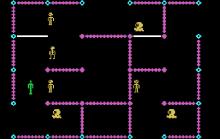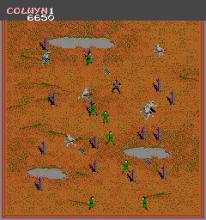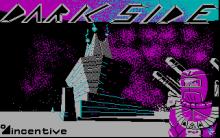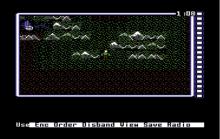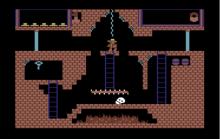SimCity 2000
Press Keyboard right side: Alt+Enter keys to switch to full screen game play, and Alt+Enter keys to return.
How to play SimCity 2000
SimCity 2000 uses a simple, icon-based interface. At the top of the screen, there is a toolbar with small icons. These icons open menus for zoning, roads, water, electricity, and city services.
Clicking an icon opens a build menu. Left-clicking places items. Right-clicking cancels or brings up details. The interface is point-and-click, with no need for complex menus or wheels.
There are also graphs and data tools. These show city stats like population, crime, pollution, and land value. This makes it easier to decide what to build or fix next.
For many players, this clean interface is one reason the game is still enjoyable. It is not cluttered. Everything you need is just a click away.
Remember, each game uses different controls, most DOS games use the keyboard arrows. Some will use the mouse.
SimCity 2000 Description
SimCity 2000 is not just a nostalgic memory from the '90s. It is a rich city-building simulation that continues to offer deep strategy, clear goals, and flexible gameplay. Released in 1993 by Maxis and designed by Will Wright and Fred Haslam, the game built on the original SimCity with smarter systems, better visuals, and more control. In this post, we are deconstructing SimCity 2000: an exhaustive look into what makes it last, how it works, and why people still play it today.
What SimCity 2000 Added to the Classic Formula
SimCity 2000 improved nearly every feature from the original game. The most visible change was the isometric view, giving players a better angle to watch their city grow. There is more depth now—terrain is no longer flat, and cities can build into hills, valleys, or coastlines.

It also introduced underground layers. You now manage subways, pipes, and power lines below the surface. These tools gave players more options and made city planning much more detailed.
Zoning, Growth, and Planning
In SimCity 2000, zoning drives your city’s shape. You zone areas for residential, commercial, or industrial use. People live in residential zones, shop in commercial zones, and work in industrial ones.
To grow well, zones need to be close to power and roads. They also need to be placed thoughtfully. For example, putting industrial zones near homes will bring pollution and lower land value. But separating them too much increases traffic problems.
There is a constant need to find balance in the layout of your zones.

If you're drawn to city-building in new settings, you might enjoy the twist of managing a sunny island resort in Holiday Island, where the same planning logic applies to tourism.
The Role of Infrastructure and Services
SimCity 2000 won’t let your city thrive without a strong foundation. Roads, water pipes, and electric power must reach every building. Without them, zones won’t develop.
Beyond these basics, public services also matter. These include schools, police stations, fire departments, and hospitals. Services impact everything from crime rates to education. If ignored, your city’s population will shrink or stop growing.
It is important to keep these services well-funded and placed in locations that serve large areas.
Managing the City Budget and Tax Rates
Money plays a major role in how your city develops. SimCity 2000 gives you full control over the city’s budget. You collect taxes from different zones and decide how much to fund each department.
High taxes may drive people away. Low taxes may cause budget shortages. Finding a balance is part of the game’s challenge. Deconstructing SimCity 2000: an exhaustive look into what works financially reveals how well the game links planning with money management.
Spending must be based on need. Too many schools early on will bankrupt the city. Too few services later will cause stagnation. The game rewards careful thinking over fast expansion.

If this kind of economic planning appeals to you, try Railroad Tycoon, where you grow a rail company through careful budgeting, track placement, and supply chain control. But if you prefer a medieval spin on land and resource planning, Lords of the Realm II mixes castle-building, farming, and army control with the same planning depth SimCity fans enjoy.
Modern Games That Share SimCity 2000’s DNA
There are games today that continue the legacy of SimCity 2000. One standout is Cities: Skylines. It offers deep control, modern visuals, and a huge set of planning tools.
Another is Factorio. While not a city-builder, its systems and structure remind many players of old-school simulation games.
Still, SimCity 2000 has something unique. Deconstructing SimCity 2000: an exhaustive look into what it offers compared to newer games shows that it still delivers a focused and rewarding experience.

Looking for a more playful take on management? DinoPark Tycoon brings financial strategy to life with dinosaurs and theme park fun.
Why SimCity 2000 Still Matters Today
SimCity 2000 remains a powerful example of good design. The tools are simple, but the strategy is deep. Players are always making trade-offs and adjusting to change.
There is a natural flow to the game. Each action has an effect. Each decision builds toward something. The city reflects your choices, good or bad.
Deconstructing SimCity 2000: an exhaustive look into what makes it timeless shows us that fun does not need high-end graphics or endless features. It needs systems that work well together.
SimCity 2000’s Legacy
There is still a lot to learn from SimCity 2000. It is more than just a game from the past. It’s a lesson in balance, planning, and creative problem-solving.
Deconstructing SimCity 2000: an exhaustive look into what makes it work shows how strong its core systems are. Even today, players can enjoy building cities, managing growth, and solving the same timeless challenges.
For anyone who loves strategy, planning, or classic gaming, SimCity 2000 is still worth the time.
Released by Maxis in 1993, SimCity 2000 (SC2K) is a city-building/simulation computer game and the second installment in the SimCity series. Its objective is to construct a city, cultivate industrial and residential domains, assemble infrastructure and accumulate taxes for further enhancement of the city. The game also included several playable "scenarios", in which the player must deal with a disaster and rebuild the city to meet a set of victory conditions.
Cheats/Hints/Walkthroughs for SimCity 2000
Starting from nothing can feel overwhelming. Here are some useful tips for building your first stable city:
- Pick a flat map. Hilly terrain can cause road and water issues.
- Start with a power plant. Coal is cheap but dirty. Wind is clean but weak.
- Use a grid road layout. It is simple and works well with services.
- Zone in blocks. Keep each type close enough to avoid traffic issues.
- Add pipes early. Without water, growth slows down fast.
- Don’t overspend. Start small, and expand only when income rises.
These steps help create a strong base for growth. It is easier to fix small mistakes early than large ones later.

SimCity 2000 - additional information











